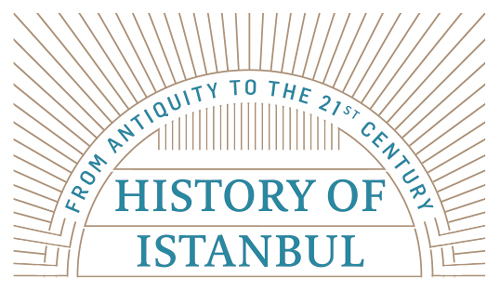THE RULES OF ETIQUETTE
The rules concerning etiquette, morals and behavior that are expected to be known and followed by people in order to ensure harmony in a society are called adab al-muasharah. As a noun phrase, adab al-muashara consists of two words, adab and muashara. The word adab, which can be defined according to the dictionary as respect, politeness, a feeling of shame, invitation, kindness, gracefulness or appreciation, more precisely refers to the customs, traditions, behaviors and types of conduct which have become social rules and the knowledge that creates these social rules.1 The term adab is also used to refer to the method for how to do something. The second part of the phrase, the word muashara, comes from the Arabic root ashr, which means to live together and to get along well with others. Therefore, adab al-muashara means the knowledge of appropriate conduct for social life. In the 19th century this concept came to be understood in the Ottoman State as a kind of etiquette defined by codes of behavior that were independent from the rules of morality; it was propagated through the publication of books.
During this period, adab al-muashara was related not only to actual practice, but also to modes of thinking. In this context, in order to establish the history of adab al-muashara in Istanbul, one needs to apply to different sources. For the practical side, the sources of adab al-muashara are the publications of the period, archive materials, memoirs, travel books and elements of material culture, while the most important sources which reveal the modes of thinking related to adab al-muashara are the books written specifically about the topic. The etiquette books do not necessarily indicate historical realities. Neither the conceptions revealed in these books are not independent from the social reality. The very existence of these books and the purposes behind their creation provide information about the etiquette of the period.2
In this article, we deal with the rules of etiquette in Istanbul in light of the adab al-muasharah books that were published at the end of the 19th and the beginning of the 20th century, a time when rapid changes were taking place. The reason for this constraint is that this period was a turning point in the history of the rules of etiquette in Istanbul. Even though there had been partial changes in the lifestyle and etiquette of Istanbul’s residents prior to the 19th century, this moment acted as a bridge between the previous traditional lifestyle and a more modern one. The foundations of many reforms related to the lifestyle of the period of the Republic of Turkey were also established in this period.
Adab al-Muashara during the Classical Period
Along with the social change and transformation of this period came changes to what the rules of etiquette consisted of, their definition, references to adab al-muashara, methods of learning and application. The term adab al-muashara, which started to occupy an important place in Ottoman literature in the second half of the 19th century, referred to the rules and styles of behavior appropriate to etiquette. Prior to the 19th century, however, adab al-muashara would only occupy a section or sub-section of a variety of books, and did not appear as a separate subject or title of books. In these books, appropriate manners and behavior were treated not just from a practical and worldly dimension, but also from its many other dimensions, such as religious, spiritual and philosophical.
There were essentially three types of sources related to the issues of adab al-muashara prior to the 19th century. The first one of these known as siyasetname (political treatise), the general title given to the books written about state administration. Books in the genre of siyasetname or nasihatname (advisory treatise) provided advice and help for the sultans and statesmen, particularly concerning the qualities that a ruler should have, the features of state and social life, individual morals and similar matters. Due to the fact that they provide information about the political, socio-cultural and economic structure and reflect the administrative understanding and values of their time, siyasetnames are important historical and sociological references.
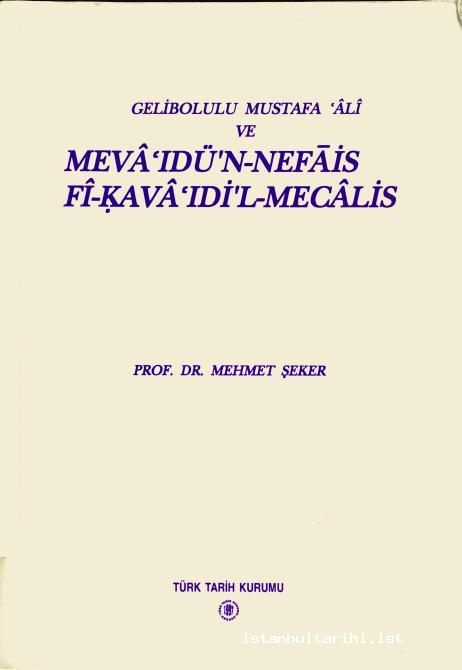
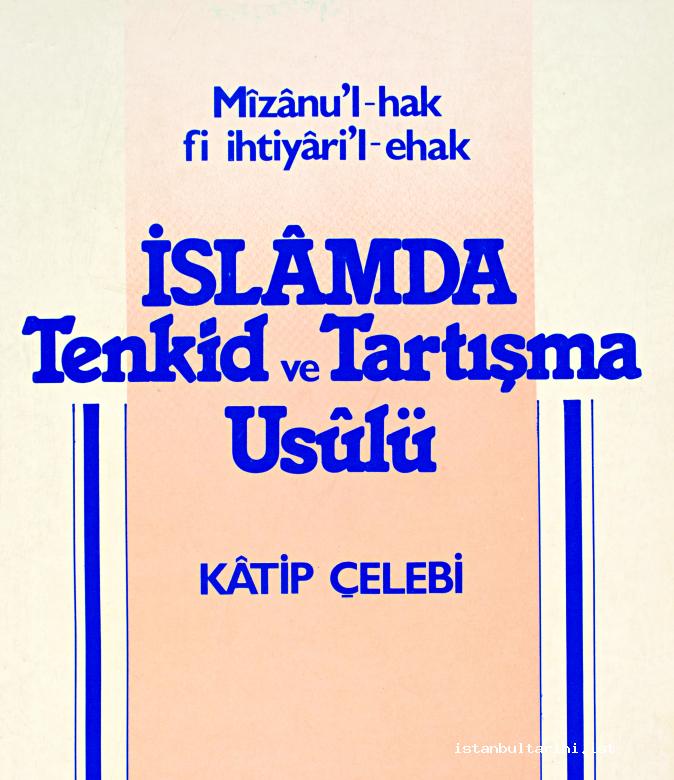
The Âsafnâme was written by Lütfi Pasha, one of the grand viziers during the reign of Sultan Suleyman I; this work was written in order to guide the other viziers of the era, and it is an important example of siyasetname literature. Âsafnâme, which takes its name from the vizier of Prophet Suleyman, called Asaf, consists of an introduction and four chapters. After expressing his thanks to Allah and sending his praises to the Prophet, the author briefly provides information about himself and explains why he wrote the book. In the first chapter, Lütfi Pasha deals with the morals and manners required in a grand vizier; in the second chapter, he discusses the precautions that need to be taken concerning wars; in the third chapter, he deals with the precautions that need to be taken for the state treasury; and in the final chapter, the author focuses on laws related to the state.3 Only the first chapter of the book is concerned with adab al-muasharah.
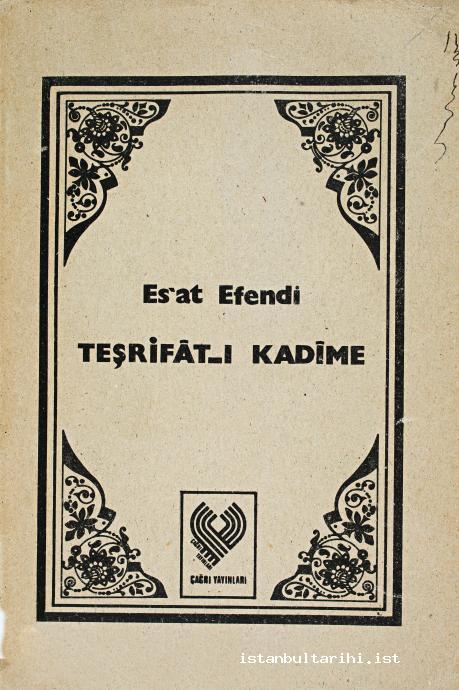
The qualities that a grand vizier and other viziers should have, as well as the adab al-muasharah that the sultan should observe in his relationship with the statesmen and his subjects are explained in this chapter. According to these rules, the grand vizier should not be malevolent or reveal the contents of his meetings with the sultan to others, not even to the other viziers. Lütfi Pasha relates a nice anecdote to illustrate this matter; Pîrî Pasha, who was the grand vizier during the reign of Sultan Selim I, came into the presence of the sultan in the late afternoon in order to talk about a private matter. He talked to the sultan for a long time during this blessed and cheerful time of the day. When Mesih Pasha of the viziers asked him “about what they discussed in the meeting,” Pîrî Pasha not only refused to answer the question, but also requested that the sultan dismiss Mesih Pasha from his duties. Mesih Pasha was only able to remain in his post thanks to intermediaries making requests to the sultan on his behalf.4
It can be said that siyasetnames written between the 14th and 16th centuries usually focused on the sultan; the approach adopted was that the interest of the sultan was equal to the interest of the state. According to this approach, in many circumstances justice and fairness were accepted as politically beneficial and necessary for the state rather than as absolute moral values.5 The most important aim of the siyasetnames, the authors of which were usually from the ulama, was to give advice and provide guidance to the administrators and rulers of their era and in the future. In this respect, Ottoman siyasetnames of the classical period do not contain much information regarding what adab al-muasharah in more general social life was.
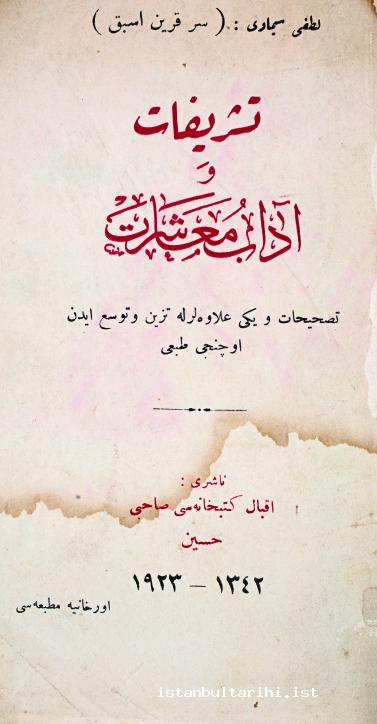
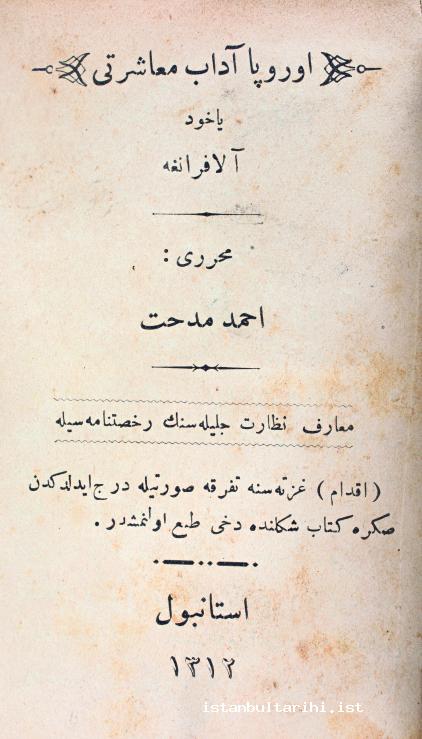
Secondly, there are chapters about adab al-muashara and social life in the morality books written on general and individual morals and family management. In such books, civilized, polite and praiseworthy manners in various situations of daily life, such as eating, drinking, visiting, being in the neighborhood, speaking with other and travelling are called ahlaki davranışlar (moral behavior).6 Kınalızade’s book, entitled Ahlâk-ı Alâî (16th century) is a book which assesses appropriate and polite behaviors within the context of morality.7 The French historian and journalist Abdolonyme Ubicini (1818-1884), who lived in the Ottoman State and wrote many articles and letters on the political, social and economic state of the country, was of the opinion that the people of the Orient paid a great deal of attention to etiquette. He considered the Ottomans so extreme in this respect that they were very close to the Chinese, who regarded the rules of etiquette as both a science and a duty, in this matter. He also emphasized that 30 of the 216 books on morals available in the palace library were concerned with adab al-muashara.8 In these books, various issues, such as customs and traditions, dress codes, the etiquette of sitting and standing, table manners, relationship with young people and elders, greetings and conversation are dealt with.
Finally, there were books directly written about the rules and manners of behavior; these usually focused on the rules to be followed in social and family life. Essentially, similar issues are also examined in some books on ethics, ilmihal (books concerned with basic principles of worship), and child education. As in siyasetnames, such books usually targeted administrators and high-ranking assemblies.9 In this context, the Muradnâme by Bedr-i Dilşad, one of the poets of the period of Sultan Murad II, and Ali b. Hüseyin’s (Alaaddin Çelebi) Tarîku’l-Edeb were books written in the 15th century which provided guidelines for etiquette. At the same time, Edirneli Revanî’s (d. 1524) İşretnâme, written in the 16th century, is concerned with the etiquette that needed to be followed in gatherings for leisure and entertainment. Likewise, Gelibolulu Mustafa Âlî’s Mevâidü’n-nefâis fî kavâidi’l-mecâlis10 (16th century), which deals with how to act in distinguished and elite gatherings and groups, and the anonymously written Risâle-i Garîbe11 (18th century) are among books that guide the reader down the path to appropriate manners. Gelibolulu Mustafa Âlî, who examines etiquette in his book, also criticizes the social life, customs, ethics and institutions of the time, pointing out the problems and defects in the state and palace organization. This book, which is not an ordinary treatise on ethics or etiquette, examines in detail the social life and thinking of the author’s time, dealing with various issues, ranging from folklore to politics, which pertain to the social structure; this is done in a unique style.12 Risâle-i Garîbe, on the other hand, deals with unethical behavior that could be observed in the social life of the era.
It is also possible to find examples about the principles of etiquette in books other than siyasetnames and literature devoted to ethics or etiquette. In his book Mîzânü’l-hak fî ihtiyâri’l-ehak, written about the scholarly and religious life of the second half of the 17th century, Kâtib Çelebi (Haji Khalifa) states his personal observations about certain daily practices, such as the manners for shaking hands and greetings, which are accepted as part of general etiquette. Kâtib Çelebi primarily examines the religious background of such practices and indicates a middle path to be followed in social practices. For example, Çelebi states that shaking hands had been practiced among the Companions of the Prophet; they shook hands when they pledged allegiance or met with each other in the early periods. However, this was later abolished as a custom. He then advises his readers:
The reasonable middle course here is that a man should not be the first to shake hands on Friday in the mosque, but if his neighbor offers his hand what can he do but take it? Otherwise his neighbor will be mortified or vexed; certainly he will feel some disagreeable emotion. To practice this innovation is less grave than to hurt the feelings of a believer. And if from that moment on he conforms with the custom and takes the initiative in shaking hands, well, it is not the sort of thing to make him a rebel against God or a sinner. There is no harm in it. As for shaking hands at ‘Eids, to shake hands on meeting somebody is Sunna; to confine it to the ‘Eid is a matter of custom and use, not Sunna. But then not every facet of behavior can be Sunnah.13
In the chapter titled Inhina’ (bowing), Kâtib Çelebi discusses the customary manners for salutations. He states that there is some dispute about the practice of bowing or motioning with the head and hand instead of using verbal salutation; it could be that this is a religious innovation (bid’ah). He claims that to dispute and contend with the people on the grounds that these customs are contrary to the Sunnah and should be abandoned is pure folly, for as has frequently been said, it is difficult to change a people’s customs. Certain matters that are opposed to the prophetic traditions can be excused on the basis of this difficulty in abandoning the customs and traditions of a society. Kâtib Çelebi expresses that, in conformity with the Qur’anic injunction, “and when you are given greeting, reply with one better or return the same” (Nisa 4: 88), during the lifetime of the Prophet even a small boy’s salutation would be given a response. He states that later, in his time, however, greetings gained a meaning of implication of equality of age and rank. In fact, because of the established customs of greeting in Ottoman society, it would be considered inappropriate for a younger person to enter a gathering of older people and greet them saying assalamu alaikum. Such an act might be considered by the elders to be disrespectful and belittling. This is because, on entering the presence of their teacher the mere salutation of a student saying assalamu alaikum would be considered a sign of equality of rank and age and a failure to observe etiquette; the student should instead remain silent. Kâtib Çelebi advises people to observe the etiquette required by customs, traditions and formalities. According to his view, those who practice the task of “enjoining right and forbidding wrong” must understand these subtle truths and must not waste their time vainly trying to divert people from their accustomed ways.
In traditional Ottoman society, rules of etiquette used to be learned through training and education within the family and society rather than from books and publications. The beginning of learning the rules of etiquette through books was the sign of a new life style which emerged along with the rapid, but not easily adopted, changes. As manners were similar to customs in traditional society, they did not change quickly or easily, and even when changes did occur, they would be transmitted orally from one generation to the next. In other words, one would learn of unacceptable or acceptable behavior in the family and society, and would then act accordingly. Therefore, the behavioral codes which needed to be learned could be clearly observed in the actual, daily life and experiences of the members of the community. Lütfi Simavi, who was the başmabeyinci (head chamberlain) and the author of Teşrîfât ve Âdâb-ı Muâşeret, expresses this matter as follows: “Every land has its own method of official etiquette and protocols. These cannot be found in books and no school teaches them, either. Learning such subtle matters depends on experience, paying attention, and learning from those who are knowledgeable about them.”14 It is for this reason that information about etiquette in classical Ottoman society, in which oral culture was dominant, is relatively limited compared to later historical periods.
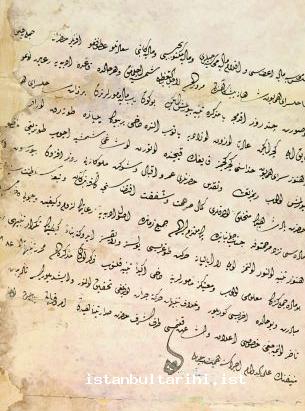
Changes in Istanbul and Adab al-Muashara
Due to the dramatic and comprehensive changes in technology, lifestyles and behavioral patterns in the 19th century, this era is known as “the age of transformation” in world history. Historians also refer to this as the “Long 19th Century” based on the fact that while many new developments took place, their processes and results exceeded it. In many contemporary publications, the 19th century is defined as “The Age of Civility”, due to the growth of interest in etiquette and the rapid increase in the number of books written on etiquette. In 1835, Charles Lamb (Elia) expresses this fact with the following phrase: “In the 19th century, the era from which we date our civility…”15 John F. Kasson states that in the 19th century, on both sides of the Atlantic, etiquette manuals were published in unprecedented numbers, corresponding with the rise of bourgeois culture and new printing technology.16
In the Ottoman world, on the other hand, many developments led to a rapid change in the lifestyles of certain segments of society, such as an increase in the general number of publications, the strengthening of the networks of transportation and communication and the widespread nature of state education after the second half of the 19th century. A remarkable interest in books concerning adab al-muashara can also be observed during this period. This interest is closely related to the rapid transformation and changes being experienced in the contemporary world and in Ottoman lands. Ottoman intellectuals, who closely observed their own environment and more particularly, that of Europe, saw that there was a definite trend towards learning correct etiquette and observing the rules of civility; it was viewed essential that Ottoman society live in accordance with these rules if it was to join the “civilized world.” After the last quarter of the 19th century, such intellectuals wrote and translated many books that were concerned with adab al-muashara, proposing solutions rooted in the Ottoman world to the problems caused by the rapid Europe-centered change and transformation. In these books, the definition and contents of adab al-muashara were reestablished; adab al-muashara was defined in the most general sense as practical knowledge used in daily life. In this context, many practical issues, such as table manners, salutations, how to behave at a reception, in the street, when travelling and visiting others were all subjects focused on in these books. Among the books published during this period and which are still available to us, some of the most comprehensive and best-known are Ahmed Midhat’s Avrupa Âdâb-ı Muâşereti yahud Alafranga (1894), Lütfi Simavi’s Teşrîfât ve Âdâb-ı Muâşeret (1914, 1918, 1923 and 1926) and Hasan Bahri’s Centilmen.17
Adab al-Muashara in Istanbul: Urbanism
Although in a general sense adab al-muasharah corresponds to the rules of etiquette, it is a term related to the city. The word medeni (civilized) , used for those who observe adab al-muashara, comes from the Arabic word madina, a word that means city. The English word civilized refers to a high state of cultural knowledge and refinement in taste and manners, as opposed to rudeness and barbarianism; and the word civility, meaning politeness, comes from the French term civilité, which in turn comes from the same root as the Latin word civitas or city. Likewise the English word polite originated from the Greek word polis, meaning city. In other words, the English words politeness and civility, which are used to express grace and elegance, are related etymologically to the term city and refer to rules that need to be observed in public areas, while eating, speaking, as well as etiquette related to the human body. These rules organize the city life of the people who are connected to one another and the state through complex and social networks that result from their functional relationships.18
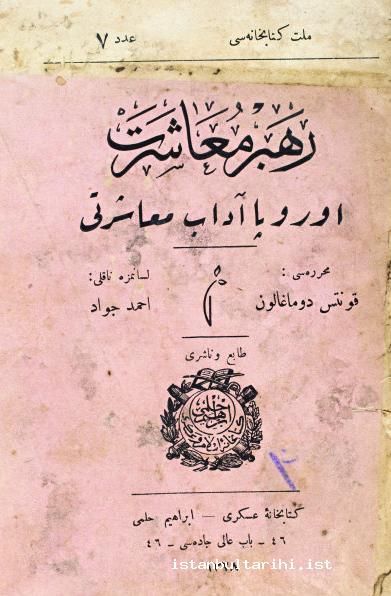
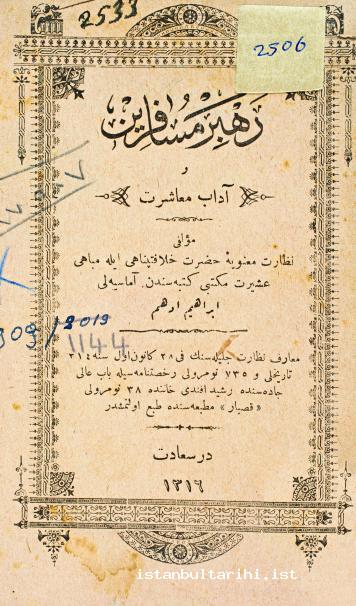
Throughout history, Istanbul has hosted several civilizations, and the values that created life in Istanbul have developed out of this cultural richness and accumulation. In this context, using the phrase the adab al-muashara of Istanbul also means the adab al-muashara of the city. In Istanbul, a cosmopolitan cultural life became dominant and people from various cultural backgrounds had the experience of living together. Especially during the Ottoman era, people who originated from various ethnic, religious and geographical backgrounds created a common culture of daily life in Istanbul.
The fact that Istanbul was not only the political capital of the Ottoman State, but also the scholarly, literary and cultural capital enabled dominant conventions of etiquette, elegance and grace to develop in this city. It is known that almost all of the publications about adab al-muashara were printed in Istanbul and that a significant part of those publications reached readers in Istanbul. Phrases such as “gentleman of Istanbul” (İstanbul beyefendisi) or “lady of Istanbul” (İstanbul hanımefendisi), which are used today in Turkish to refer to the past, indicate Istanbul’s special place in this respect. On the other hand, it should also be known that the etiquette known as the adab al-muashara of Istanbul did not merely consist of common ways of living upon which everybody had agreed. In addition to the changes in adab al-muashara practices in Istanbul, throughout history there were various ways of understanding adab al-muashara and its practices by socially, religiously and ethnically different groups. In the 19th century, when rapid change and transformation were experienced, people from varying classes reacted differently and developed various attitudes to the alafranga (European) life style, and thus alaturka (Turkish), alafranga, and mixed adab al-muashara practices co-existed.
Istanbul became a pioneer of transformation in many areas of life. Rehber-i Müsâfirîn ve Âdâb-ı Muâşeret, written by Amasyalı İbrahim Edhem in 1898, is an important book in that it demonstrates the rapid change and transformation in Istanbul and combines the features of a city guide and a book of adab al-muashara. In this way, the work suggests that there is no difference between adab al-muashara and urban life.19 In the first chapter of the book, Amasyalı İbrahim Edhem provides information about the means of transportation in Istanbul, such as trams, steamboats, trains, and the tünel, their ticket prices and routes, and places of interest for those who have never been in Istanbul before. He also provides detailed information about various places and institutions, such as hospitals, schools, libraries and recreational areas. In the second chapter of the book, the author deals with the etiquette specific to the Ottoman capital (Dersaadet), manners that one need observe in the places and institutions mentioned in the previous chapter. Thus, this book qualifies as a work concerned with adab al-muasharah, even though essentially it is a city guide.
In a period when the general tendency was to write books about the European rules of etiquette for people who wanted to travel to Europe, Amasyalı İbrahim Edhem wrote a book for state officials who came to Istanbul from rural areas and for travelers who came to visit Istanbul from both inside the Ottoman State and abroad. The most important reason for Amasyalı İbrahim Edhem to write this book was the transformation Istanbul was undergoing at the time. This change was so rapid that not only those who came to the city for sightseeing, but even people who lived there and wanted to act in accordance with etiquette rules needed some kind of guideness. Amasyalı İbrahim Edhem wrote Rehber-i Müsâfirîn ve Âdâb-ı Muâşeret as he was aware of the changes in Ottoman social life, and thus the etiquette of Istanbul had become a central issue. This is why the main subject of the book is the adab al-muasharah of the capital city, Istanbul. On the other hand, it is interesting to see that Amasyalı İbrahim Edhem does not deal with mosques or tekkes (dervish lodges) when he speaks about the important places and institutions of city life. He explains the reasons for this in the itizar (apology) section of the work, saying that he dealt only with the places that would be necessary for visitors. We can assume that in this way, the author was aiming his work not at Muslims alone, but rather at a more general audience.
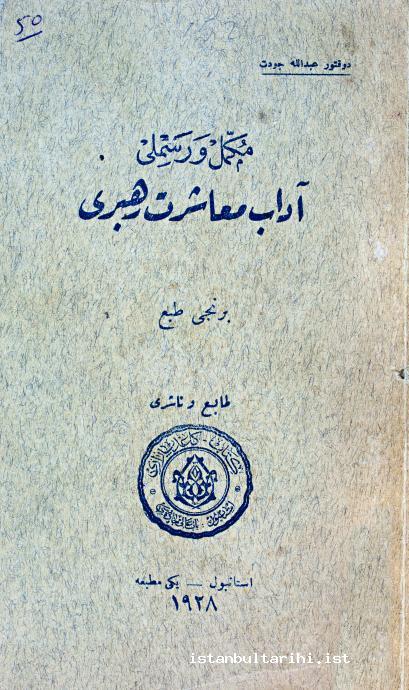
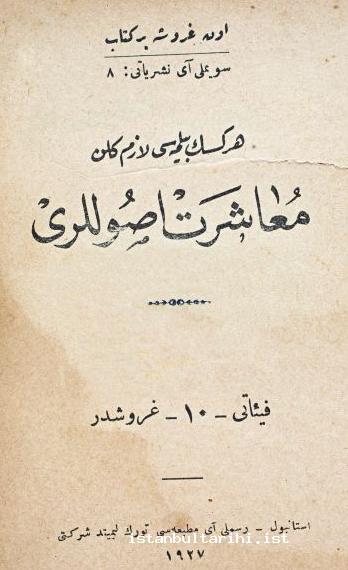
The author bases the legitimacy of his book Rehber-i Müsafirîn ve Âdâb-ı Muâşeret on the ethics, traditions, and the rules of etiquette in the capital city which were different than the ones practiced in the rural areas of the empire. As a matter of fact, these differences in the manners of Dersaadet and countrysides was a valid concern before the 19th century for a number of reasons, such as the relatively small populations, the common local culture and the generally flexible employment opportunitiesin the countryside, as compared to Istanbul where there was the higher population, the dominance of a cosmopolitan culture, and the intensity of the employment opportunities. On the other hand, the author highlights that Istanbul and the more rural regions differed completely in the aspects of transportation, technology, institutions, lifestyle and etiquette; this was a result of the rapid transformation of Istanbul in the second half of the 19th century. In fact, the residents of Istanbul discovered new means of transportation and places for socializing in the second half of the century. Rules of public etiquette which involved a greater distance between individuals developed in these areas of life.
Amasyalı İbrahim Edhem discusses a state official who recently moved from the countryside to Istanbul; being unaware of these differences, these official experienced difficulties. According to the author, “neighbors and frequent visitors to the casinos and coffeehouses do not treat newcomers favorably. Those who were used to warm treatment in the countryside would misinterpret such an attitude. After time passes and people get to know what kind of a man someone is, they start to be treated warmly or negatively by the residents.”20 According to the author, gold is gold wherever it is; it never loses its value, but people themselves need to determine the treatment they will receive from others.
The argument that “people themselves determine the treatment they will receive from others” was adopted by many of the books about adab al-muasharah which were published after the end of the 19th century. Ahmed Midhat says that Europeans first look over peoples’ clothes, poise, states and characters and treat them based on those values.21 According to Amasyalı İbrahim Edhem, on the other hand, someone’s level of humanity can be determined by their manners and behavior.22 On the contrary, Mehmed Emin, who dealt with adab al-muashara from a traditional perspective, criticizes treating people based on their clothes and behavior in his work Âdâb-ı Muâşeret Nasıl Hâsıl Olur (1904). He argues that as the most honorable creation, human beings deserve to be respected, no matter their behavior or appearance.23 Mehmed Emin clearly states that the understanding of adab al-muashara based on reciprocity was a reflection of the newly emerging European (alafranga) adab al-muashara understanding, which did not fit in with Ottoman national traditions.
Even though Amasyalı İbrahim Edhem tried to write about the rules of etiquette in the capital city during his era, he could not refrain from saying a few words about alafranga etiquette; the term alafranga significantly influenced the era that almost all the authors of books about adab al-muashara were examining. According to Amasyalı İbrahim Edhem, some people would act in contravention of the general rules of etiquette, using the excuse of alafranga to sit wherever they wanted, go wherever they wanted; in addition, they would claim that nobody had the right to limit their freedom, although every action against the religious codes was considered to be impertinence. According to the author, there are volumes of books on the alafranga lifestyle, but people living in Istanbul still do not know what alafranga etiquette is, thinking that many forms of behavior that are against religion, ethics and etiquette are alafranga. Thinking this, they would adopt such manners. Amasyalı İbrahim Edhem says that “we are an obedient nation to the people of Islam and the great Ottoman State and are required to follow the acceptable and favorable etiquette,” and he states that in many respects alafranga customs are in contradiction to the Ottoman lifestyle.24
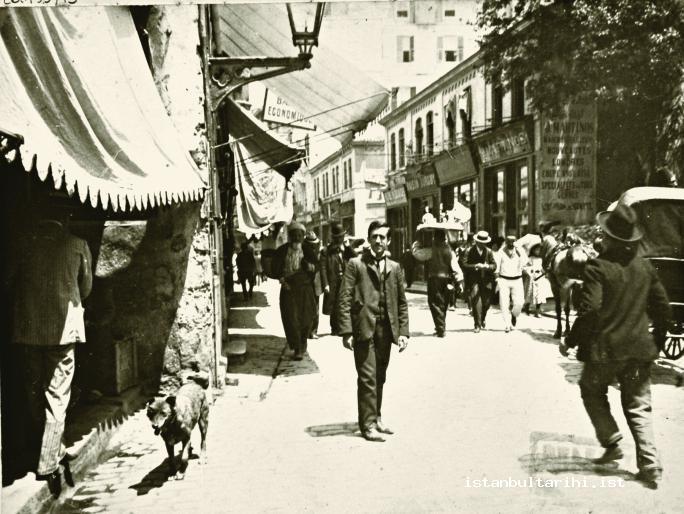
On the other hand, in other adab al-muashara works that were published after Amasyalı İbrahim Edhem’s work, it is stated that day by day Istanbul was moving away from Anatolia and coming closer to Europe. In the foreword that he wrote to Lütfi Simavi’s Teşrîfât ve Âdâb-ı Muâşeret (1914), Abdullah Cevdet claims that Europe approches Istanbul as a threat and thus approaching Istanbul closer to Europe was of vital significance. Likewise, Ahmed Hamdi Tanpınar also states that Istanbul experienced the most rapid change of its history at the beginning of the 20th century. According to Tanpınar, every major city changes from generation to generation, but between 1908 and 1923 Istanbul left its old identity completely behind and became a totally different place.25
ADAB AL-MUASHARA IN THE STREETS
Throughout the 19th century an intensive effort was made to transform Ottoman Istanbul into a Western-style capital city. During this process, the services and instruments of the police force, fire department and public transportation system were renewed. Istanbul’s most important main streets underwent urban reconstruction: the roads which had been occupied by transport animals were equipped with pavements and lighting and made suitable for walking and sightseeing. As the state penetrated into every level of city life through the municipal authorities, city districts turned into public places. The changes that occurred in the places that were opened to the public also led to changes in behavioral codes and created new cultural practices and forms of socialization, such as promenading, window shopping, shopping and night life. Such transformations in urban life forced people to be more careful and polite in their behavior and to avoid rude and inconsiderate actions.
The new public forms of behavior that developed during this period made it necessary to develop new styles of communication and relationships among people which were different than previous centuries. After the creation and increased availability of transportation options, such as trams, trains and steamboats, it became necessary to redefine the relationship between the individual and the streets. Contrary to the orientalist norms of the period, the streets were transformed into mirrors that reflected the rules of alafranga etiquette, behavior and communication. Because of the common manners accepted in this arena, people started to wear similar clothes and their speech started to become similar in style, with conventional phrases appearing. Rude behavior displayed in the streets, which was now understood as a public space for all, was seen as the greatest obstacle facing the Ottoman reform process towards modernity and civilization. In the preface he wrote for Ahmed Cevad’s translation of the work by Comtesse de Magallon, which was titled Rehber-i Muâşeret: Avrupa Âdâb-ı Muâşereti (1910-1911), İbrahim Hilmi lists the rude street behavior of the Ottoman soldiers which attracted the displeasure of the Europeans:
The class of high officials, most of whom have been raised among low and disgraceful men, makes the Europeans, with whom they meet by accident, hate them because of their manner of living and behavior in social exchanges; these fit neither the manners of the Orient nor the Occident…It is possible any time of the day to meet an officer who has not shaved for weeks, is wearing a dirty uniform, has unpolished shoes or boots…Again, in the distinguished bars of Beyoğlu it is possible to meet many esteemed members who take off their shoes in public.26
On the other hand, the streets did not have the potential to exactly reflect the changes and transformation experienced in the 19th century. During this period, the streets were under strict control of the Ottoman central authority and were regulated by detailed rules formulated by the political authority. Change and transformation were reflected in the streets only to the extent that the Ottoman legal authorities allowed. Issues related to public places, such as how the men and women should dress and behave in the streets, and how common places should be used by both genders were matters solved directly by the Ottoman officials. It is for this reason that the picture reflected in the streets, particularly in terms of the behavior of Ottoman women, is inadequate or even deceptive as a reflection of the Westernization, modernization and transformation that took place at the individual, family and societal levels. Ahmed Rasim speaks about two different, conflicting understandings of adab al-muashara, that developed in public areas and that developed in private areas; this division was the result of the political authorities’ control of public spaces:
A few times a year, the government of Sultan Abdulhamid (II) issued orders to women not to walk in a flirtatious way in the streets, not to wear their veils and headscarves in a way that was in contradiction with the traditions of Islam, and to refrain from speaking with men in the streets. They took strict precautions to keep women out of sight of on the trams and the steamboats, to prevent women from walking around on the nights of Ramadan and other holy nights, to make them stay behind screens in public places, and to prevent them from walking around the shops, like the bazar and the Bonmarşe, in Beyoğlu. The state announced that it would inform the relatives of any women who violated these orders. These bans carried an intrinsic conflict by forcing the women to obey such commands in public places while letting them watch all kinds of shameful acts when in private places.27
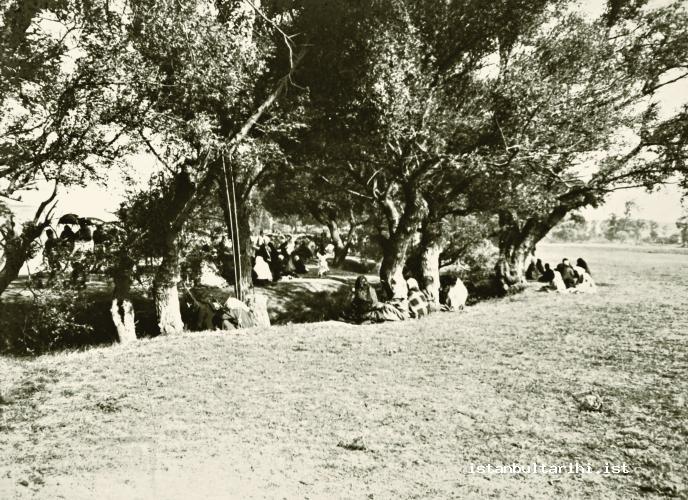
Moreover, the supervision by the Ottoman political authority over the streets was not something new. In the earlier periods “commanding right and forbidding wrong” used to be regarded as the responsibility of every individual and the state. The codes about men’s and women’s dress and etiquette in common public places were determined according to certain rules. Even though the Ottoman State followed a policy in favor of modernization and reform in matters of state and city administration in the 19th century, it maintained its traditional approach towards public order. It did not encourage or force all people to adopt the European-style adab al-muashara. For example, as a sign of modernization, the fes was required to be worn only by Ottoman officials. It is possible to see the variety and colorfulness in the clothing of the time in the selections prepared by Osman Hamdi Bey and Victor Marie de Launay for the Vienna Exhibition “Elbise-i Osmaniyye (Elbise-i Osmaniyye: Les Costumes Populaires de la Turquie, Istanbul)” in 1873.28 In this respect, the influence of political authority over the streets was limited, and the decision to choose which kind of adab al-muashara -that is alaturca or alafranga- for clothing and behavior to be followed in the streets was left to the individual and the general society. The same attitude can be observed in the books of adab al-muashara of the period. Regarding the adab al-muashara in the streets, there was no one unanimously accepted code of etiquette.
Much of the etiquette in public places was based upon the principle of not disturbing others. These rules are also valid today and can be summarized as being careful not to run into someone in the street; if such an accident happens, one should be the first to apologize; to refrain from standing in front of entrances and thus blocking it; to refrain from poking people with walking sticks or umbrellas; to refrain from walking in the streets with one’s hands in pockets and to not smoke in public. Chatting for a long period of time in the middle of the street, thus blocking the way for others or speaking in a loud voice are among other examples of inappropriate behavior in a public space. In the books of adab al-muashara, simple and primary rules of etiquette regarding the streets were presented to the audience. The most basic rules of etiquette which should be observed in the streets are those related to clothing, salutations, shaking hands, walking and using an umbrella.
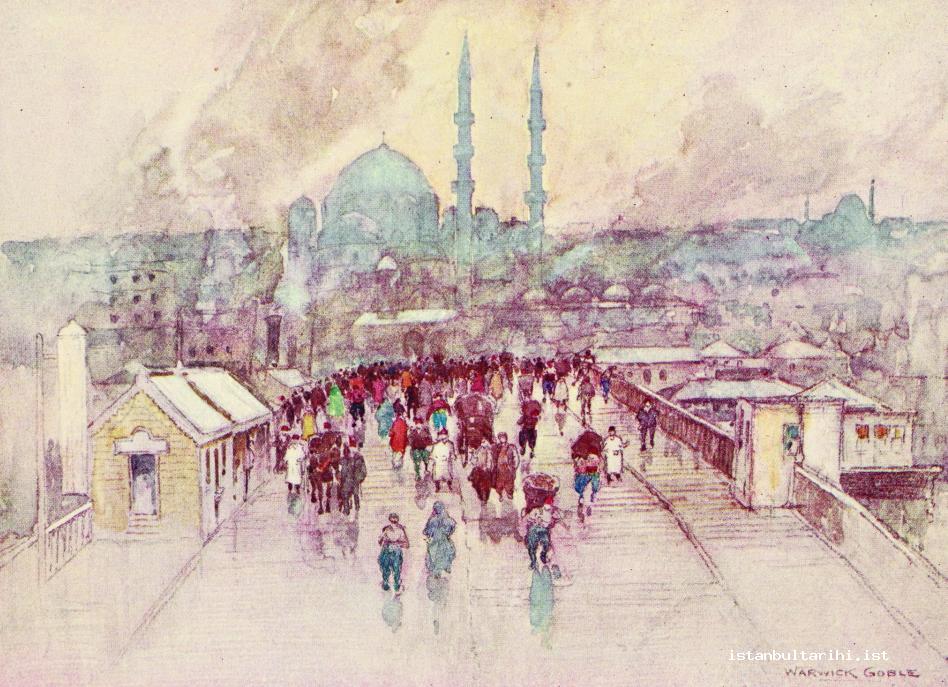
In contemporary Europe it can be seen that the issue of street etiquette was much more detailed. There were various issues discussed, such as how a man and woman should walk side by side, especially in the streets, when walking in the street which one of his arms the man should offer the woman, and on which side of the street the woman was supposed to walk. Although in Ottoman Istanbul men and women could be seen together in the streets, it is possible to say that such alafranga rules of etiquette were not generally paid much attention. Even though Ottoman women became more visible and active in the last periods of the Ottoman State, it can be seen that traditional Ottoman culture was dominant in their relations with males in the streets. Although it was advised for the woman to walk on the right of the man if they were walking together in the street, it was also stated that, according to the flow of traffic, the woman could be on the left side of the man so that she did not end up on the side of the street. Here the most important matter was to protect women and their personal space.
On the other hand, the books written during the Republican period adopted a quite formal approach to the rules of street etiquette; all classes of society, be they male or female, were required to observe the modern rules of etiquette. In this way, etiquette penetrated to all levels of daily social life. Authors of adab al-muashara books, such as Safvetî Ziya, Cahid Sahir, Vasıf Necdet and Abdullah Cevdet use “a language of obligation” rather than “a language of advice”. Safvetî Ziya clearly defines the areas of modern adab al-muasharah and criticizes Ottoman adab al-muashara books which limit European etiquette to certain situations and places:
It is wrong to think that adab al-muashara is limited only to balls, shows and halls, while assuming that there are no rules or principles, and that everybody is free to act however they want in public places. In modern life the relationship, actions and behavior between civilized people are defined, determined and established. All aspects, all incidents and all possibilities of everyday life are organized, and how to act in every place has been unanimously agreed upon, and an order and regulation has been established.
Abdullah Cevdet says that “one should act as if he is at a social event or in a hall, even when he on the street,”29 defining the street as a place where the strictest rules of etiquette are applied, comparing it to a grand hall in which a dress code similar to that of uniforms is applicable and which has been defined to the tiniest detail. This admonishment is an indication that the street, where various adab al-muashara rules were observed during the Ottoman period, had become even more formal and official during the Republican era.30 Moreover, in the 1930s we see special efforts by the Republican state authority and the media sector to have the people adopt the alafranga rules of etiquette, trying to make it a part of daily life; this differs from the Ottoman period, when the rules included in books on adab al-muashara gave rules that were only applicable to a limited class of Ottoman society, and the Ottoman political authority did not force the people to adopt these manners.
Apparel
The most important condition for being out in the streets was to be wearing the proper clothes. There are differing suggestions and views about what should be worn in the street. It was often suggested that clean and simple clothes should be worn, such as a simple suit composed of a jacket and trousers known as veston.31 In the second half of the 19th century and the first quarter of the 20th century, traditional Ottoman apparel, alafranga clothing, and even other styles, such as a synthesis of traditional and alafranga apparel known as İstanbulin, could be observed in the streets. Some of the styles that developed during the Ottoman reform process, however, left their mark on the culture of the era. This included the redingote and İstanbulin, which were suggested to Ottoman men for wearing both in public places and in all semi-formal settings. In his novel Kiralık Konak (1920), Yakub Kadri speaks about two separate periods in Istanbul in reference to these two types of clothes:
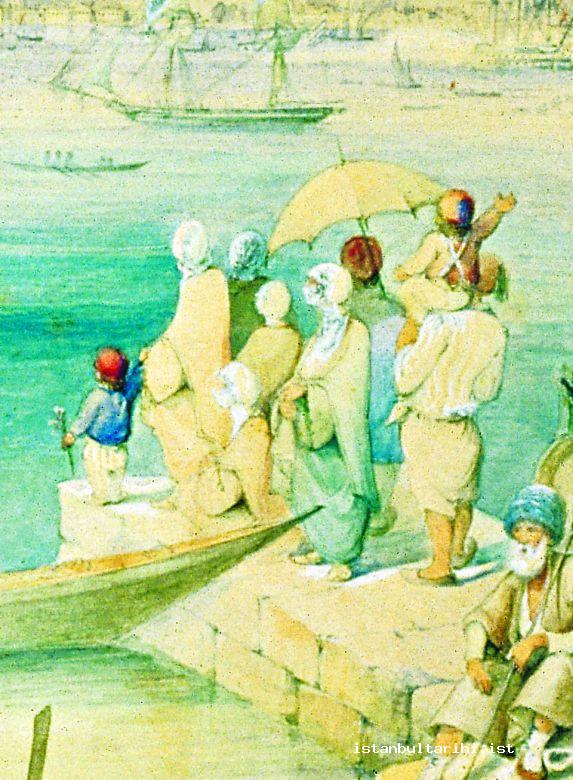
There were two periods in Istanbul: One of them is the period of the İstanbulin and the other one is the period of the redingote. The Ottomans had never been as elegant, clean, and polite as they were during the period of the İstanbulin. The greatest work of the Tanzimat-ı Hayriyye (Beneficial Reforms) is the gentleman of Istanbul dressed in İstanbulin. This attire introduced a new type of human to the world, and Turks in this attire appeared to be a new and quite special nation, located between uncivilized Asia and harsh Europe. This nation, which is more thoughtful and plainer than the northern nations in regards to life - and clothing styles - manifested itself as an epitome of the Mediterranean nations in respect to feeling and thinking: abstaining from common work, being balanced in their anger and pleasure, honest family fathers and polite owners of mansions…
Then came the period of the redingote from which a half-servant, half-guard, hypocritical and low-class generation emerged. In their hands, the life of mansions turned into a life of cottages. No style was left in living life, thinking or dressing. Everything lost its traditions. Every brain was filled with a tasteless and degenerated fondness for Arnuvo and rococo. Not only our buildings, furniture, and clothes, but also our etiquette became rococo in style.32
How to wear a European-style redingote according to adab al-muashara became a serious issue in the Ottoman lands. First of all, the adoption of this narrow-sleeved, white collar, worn together with a tie and vest was not easy for the Ottoman men, who were used to wearing comfortable and flexible items of clothing. Hilmi Uran writes in his memoirs (1905-1908) that this attire was not well-liked by the Ottoman bureaucrats over a certain age and was mostly preferred by the younger generation studying at the School of Civil Servants (Mülkiye Mektebi).33 Moreover, various views and practices emerged about how to wear this attire, which was worn in Europe in the presence of a person of senior rank without being buttoned up.
Ahmed Midhat, who wrote about etiquette, focusing on European etiquette, did not write about how the redingote should be worn by Ottoman men, but dealt with where and how it was worn in Europe. On the other hand, Lütfi Simavi states that even though the redingote was worn in Europe without being done up, it should be worn buttoned in the presence of person of higher rank.34 Vasıf Necdet, an author of the Republican period, wrote in his book Muâşeret Yolları (1926) that the redingote should be worn without being buttoned up, even in the presence of a senior person, just like in Europe.35
Parasols
Parasols, which were a fashion imported from Europe which grew widespread in the 19th century, prepared the ground for the emergence of new rules of etiquette in the streets. They started to become popular in Europe in the middle of the 18th century and became the most important accessory for European women in the 19th century; however, parasols were banned in the Ottoman Empire by an imperial edict in 1790 which stated that “Muslim women walk around with parasols like the European women. Admonish them. And warn them firmly that if I see anyone of them, I will kill them.”36 In another document published in 1886, parasols could not be opened when passing in front of the palace:
Even though it is banned to open parasols while passing in front of the Sultan’s palace and this rule must be obeyed, one of the finance officers walked in front of the palace and he made his servant open the parasol as soon as he passed by the palace. As a result, the office of the grand vizier ordered that no one act against this rule of etiquette and stated that those who violate it will be punished …”37
It can be seen that parasols became a part of women’s fashion in Istanbul at the end of the 19th century; this was the most important modern accessory of women’s attire which was limited in public places from many aspects. The dialogue published in Hayal magazine between two women whose clothing is very similar except for the presence of a parasol shows the mission assigned to this accessory. The woman without a parasol says to the one who has one, “Girl! What kind of accessorizing is this? Aren’t you ashamed?” Then the one with a parasol responds, “In this age of development, you should be ashamed of your clothes.”38
While the usage of parasols became widespread out in public, books on adab al-muashara did not provide information about the aesthetics of how to use a parasol, rather giving practical information about how to use this accessory without disturbing others. They reminded readers only of simple manners, such as not using it in a way which would block the passage of others or not holding it too close to the face or too far from the shoulder. In fact, there are many documents in the archives of the period about the accidents and disputes caused by parasols.
Salutations and Shaking Hands in the Streets
Some of the most important rules of etiquette which needed to be heeded in the streets were those concerning salutations. The first thing that one needed to know was who should greet whom first. Much of the time the question of who should be first was determined based on the hierarchy of social status. This hierarchy was first determined based on gender, and then age, rank, position, wealth and status. In traditional Ottoman society the older of the two people would greet the younger. An older person’s salutation to a youngster was accepted as a complement and if a younger person were to greet an older person without waiting this was seen to be presumptuousness. Similarly, youngsters’ extending their hands without waiting for the elders to do so first could be regarded as insolence.
It is seen that there was confusion related to greetings after the spread of alafranga etiquette in the 19th century. According to European rules of etiquette, young individuals were required to greet older people first out of respect. Both Ahmed Midhat and Lütfi Simavi drew attention to this difference in their books on adab al-muashara. It was common in Ottoman society to wait for the older person to begin the salutation by extending a hand, a behavior which was also valid according to European etiquette rules.
According to alafranga etiquette, when a man and woman met, the man should politely greet the woman. However, if the woman were to ignore the man, then it would be more appropriate for the man not to greet her. On the other hand, the man’s extending his hand first was considered contrary to good manners, because the woman was always accepted to be hierarchically superior to the man in shaking hands. In his adab al-muashara book titled Centilmen, Hasan Bahri, who was a teacher of French and physical fitness, gives the conventional description of most of the European adab al-muashara, but he expresses that one should not greet a Turkish man walking in the street together with a woman even if he is an acquaintance.39 Since it was not even allowed to greet a Turkish man who was with a woman, it did not seem possible to directly greet a Turkish woman.
The alafranga-alaturka contradiction in rules of etiquette related to the streets becomes more apparent when one looks at the etiquette of Ottoman women. Even though alafranga rules of etiquette received approval when they were applied among men or between Ottoman men and non-Muslim women in certain social circles, alaturka rules of etiquette were dominant in public situations in which Ottoman women would normally be present. Therefore, many of the rules related to greeting and extending hands were not applicable for Ottoman women. In fact, Lütfi Simavi makes a distinction, introducing the concept of the “family woman” in the section about the street, advising this “family woman” to wear dresses that do not attract attention in the street, not to wear heavy perfumes, not to look at the faces of the people around or behind her, and not to laugh aloud.40 On the other hand, it should not be forgotten that the rules of etiquette did not receive the same recognition in all segments of society and that there were always varying practices.
Gloves, which were one of the important components of alafranga clothing, played an important role in the etiquette of shaking hands. Wearing gloves was especially widespread among women. Münif Pasha’s daughter, Arife Hanım, who was the editor of Şükûfezar, the first women’s magazine published by women, stated that wearing a ring on top of the gloves had started to become a fashion among women, but that this was not pleasing to the eye.41 Similarly, in books concerning adab al-muashara it was generally stated that a polite woman was required to wear gloves in every place outside her home. She did not even have to take her gloves off when visiting people.42 It is also seen that wearing gloves started to become popular among men, and men were asked to be careful about how they shook hands. It is stated that when two men with gloves would meet in the street, they should shake hands without taking their gloves off; however, extending a gloved hand to someone whose hands were bare was considered to be bad manners.
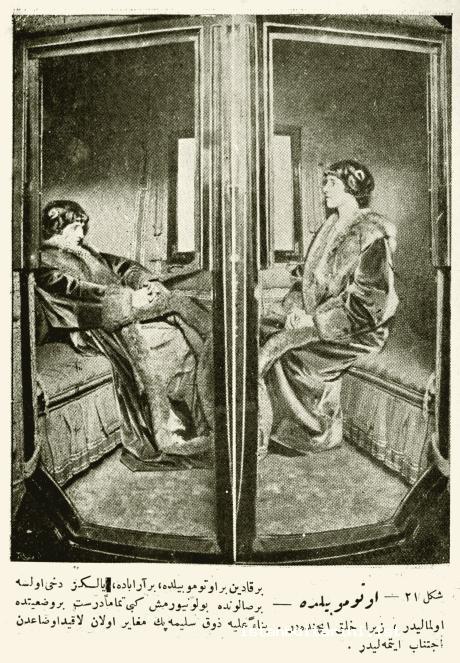
Even though the rules for greeting remained basically unchanged after the foundation of the Republic, greeting people by tipping one’s hat became widespread. Although this greeting behavior was not new, as after the Hat Act of 1925 every man was required to wear a hat, a new method of greeting that centered around hats developed. In this context, varying rules of greeting with hats under different circumstances were established. For example, a man on horseback could issue a greeting by raising his hand instead of taking off his hat, whereas it was not normally suggested to greet even the closest of friends without removing one’s hat.43
TRAVEL ETIQUETTE
Transportation in Ottoman Istanbul in the 19th Century
Until the second half of the 19th century, travel inside the city was carried out for the most part on foot; thus, the streets were organized for pedestrians and animals. In the first quarter of this century, the only carriages belonged to the Ottoman sultans. After the Tanzimat, prominent bureaucrats started to use carriages, in accordance with their official statuses. By the 1850s, transportation in Istanbul was carried out on horseback, in carriages and boats. In such vehicles, people acted in accordance with certain rules of etiquette; these rules changed in accordance with the socio-economic status of the riders or passengers. Abdülaziz Bey, who deals with the traditions of Ottoman life which had started to be forgotten at the beginning of the 1900s in his book, writes that viziers and high-ranking officials in the capital city would go to work on horseback, and thus, in accordance with a certain protocol, their servants also did the same. As a result, these officials, depending on their ranks, had approximately 70 or 80 animals in their stables.44 Merchants who lived in remote areas of the capital city would also come to their premises by riding a mule, pony or donkey.
The travel of viziers and high-ranking officials in the streets and their transportation to the Sublime Porte were subject to certain routines and ceremonies. According to etiquette, the grand vizier or other appointed viziers could not arrive at the Sublime Porte or other places on foot. On the other hand, these officials would use mounts when they went out to the streets according to the rules of etiquette, but would not use carts unless it was necessary. As stated by Abdülaziz Bey, these conventions continued into the beginning of the 19th century; during the era of Sultan Mahmud II, transportation in carriages in the winter and riding horses in the summer was accepted. Moreover, after carriages became popular among the prominent, upper-class families of Ottoman society, the carts started to be referred to by a variety of names, such as kibar arabaları (gentlemen’s carriages), seyir arabaları (sightseeing carriages) or kâtip arabaları (clerks carriages), and so on.45
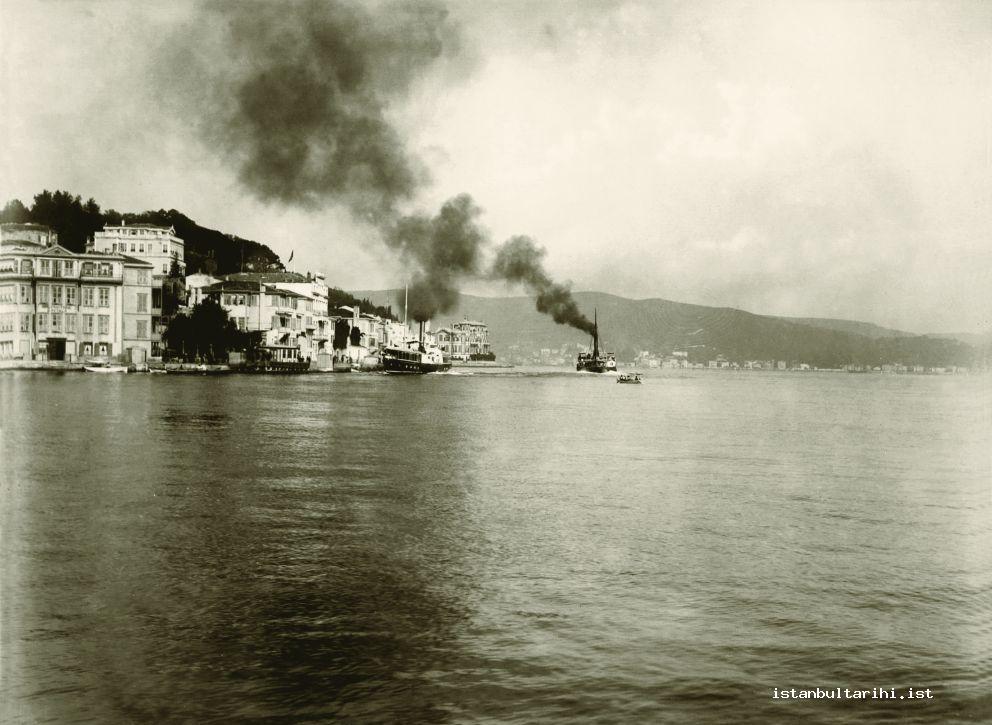
Boats that provided transportation across the Bosphorus also differed according to the status of their owners. The rowing-boats of the viziers and state officials were different. The rowing-boats used by the general public were different yet again from those of the higher classes. Likewise, the rowing-boats of the wives of the viziers and high-ranking officials changed based on the rank of their husbands. When the wives of high-ranking officials came across a vizier’s wife on the sea, the rowers of their boats would lift and hold up their oars above the sea, thus saluting the vizier’s wife as she passed by. When ladies visited someone living in a house on the seaside, it was a rule to anchor the boat to the boat house of the residence they were visiting.
New Means of Transportation in Istanbul: Steamboat, Tram and Train
In the 1800s new means of transportation operated by foreign investors started to provide transportation between various districts of Istanbul. Galata Bridge became the terminal point of the sea lines and Eminönü became the terminal point of trams, trains and steamships. After the Second Meşrutiyet, motor vehicles started to be used in Istanbul. It was not easy to make Istanbul’s streets and roads, designed for the carriages and pedestrians of the 19th century, accessible to such new vehicles. In addition to physical restrictions, the increasing popularity of these public and private transportation vehicles required the development of a new and different language of communication and rules of etiquette.
Contrary to what we might expect, the prominent writers of adab al-muasharah books of the period, such as Amasyalı İbrahim Edhem, Ahmed Midhat, Hasan Bahri and Lütfi Simavi wrote very little on the etiquette of inner-city travel in Istanbul. Adab al-muasharah books of later periods deal mostly with the rules of travel etiquette which need to be observed while travelling to Europe or in transportation vehicles in Europe; on the other hand, it is known that in the same period the transportation vehicles of Istanbul became more varied and were used by passengers from all segments of society. According to Amasyalı İbrahim Edhem (1316/1898), who wrote about adab al-muasharah in Istanbul, there were six types of transportation vehicles in the city:
Steamships travelling in the Golden Horn and Bosphorus
The trains in Rumelia and Anatolia
Trams
Tünnel
Rowing-boats
Carts and horses
In the second half of the 19th century, trains and steamships were used within the borders of the city; in particular, there were several ships that were operated by Şirket-i Hayriye for the people of Istanbul. The attention paid to the designs and decorations of the vessels and the increasing number of passengers on them created a new arena of adab al-muashara on board inner-city ships. Amasyalı İbrahim Edhem states that public transportation vehicles were very popular among the people of Istanbul, and this was why they were so crowded, making it difficult to find a place on board to stand. These vehicles were also used by women, and there were special sections reserved for them. In the ships of Şirket-i Hayriye, there were separate halls for men and women, and necessary precautions were taken in the waiting rooms to prevent the sexes from mixing.46 Contemporary periodicals and other sources provide significant information about the adab al-muashara on transportation vehicles during this period. At the same time, when adab al-muashara books of the period spoke about the ideal norms in many aspects of life, they often included negative observations regarding travel etiquette in Istanbul. Ahmed Midhat says, “Unfortunately it is not rare to see someone spit on the nicely installed floor-covering of the first class sections of the Şirket-i Hayriye steamships and then step on it.”47 Based on his observations, Hasan Bahri also makes a list of what not to do in the trams in a humorous language:
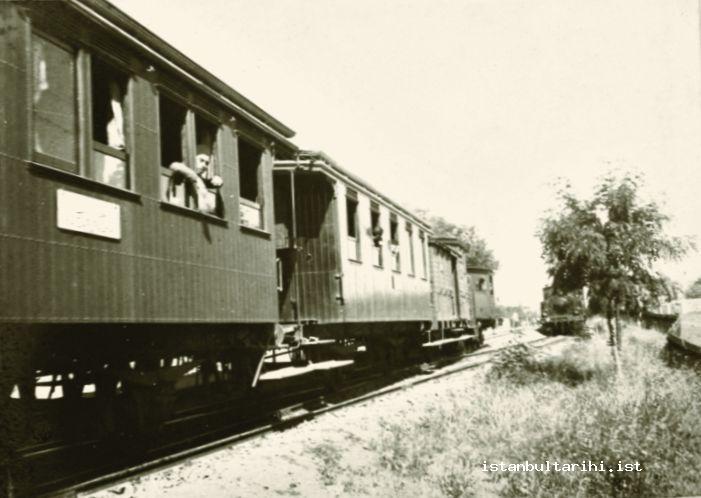
Spitting on the ground, taking off one’s shoes, sitting cross-legged, noisily blowing one’s nose into a handkerchief, which is then opened, the contents being examined closely, picking the nose or ear, placing muddy feet on top of one another, burping, sneezing as if to swallow the people sitting nearby, yawning with an open, uncovered mouth, opening the upper lip up to the sky and the lower one down to the earth, and taking up and spilling snuff on one’s clothes, moustache and beard are some rude and disgusting traditions. It is neither nice nor appropriate to smoke, as it is highly likely that this will disturb others.
There are also anecdotes commending the rules of etiquette displayed in Istanbul. The residents of the Beylerbeyi district were presented as an example for all of Istanbul in respect to their politeness and etiquette in speaking. According to the stories, it was as if some men and women in Istanbul were engaged in a politeness competition. When getting on a vehicle, they would not hustle, but rather would give their turn to the others; and they would sometimes even exaggerate this. One day Hüseyin Haki Bey, the manager of Şirketi Hayriye, asked the captain of one of the steamships traveling across the Bosphorus why he was so frequently delayed. He received the following response:
Dear Manager! How can we come on time? As your excellency knows, there is no end to Çengelköy’s vegetables, Kuzguncuk’s mobs and Beylerbeyi’s protocols. When our ship stops at the docks in Beylerbeyi, everyone starts saying to each other: “Sir, please go ahead!” “No sir, please you go ahead. Your excellency should get on the ship first.” “Don’t mention it! How can I get on first while your exalted person is here? Would it be appropriate for me to get on first when you are here?” And so my respected sir, we are delayed.48
According to Lütfi Simavi “If there is any place where one should not observe any vain customs, it is on the ship, train or tram. Attempting to observe protocols that would disturb other passengers when they are getting on or off the vehicle and forgetting that these vehicles are for public transportation is the greatest form of inconsiderateness.”
In his book devoted to the adab al-muasharah of Istanbul, Amasyalı İbrahim Edhem summarizes the rules of etiquette that need to be observed on steamships, trains and trams as follows:
Travelling by transportation vehicles such as steamships across the Golden Horn or Bosphorus, by train or by tram are matters of significance. Travelling by train within the capital city can take no longer than five to ten minutes, or as much as an hour. When the journey is longer, the etiquette displayed on board changes. Although there is no compunction in speaking with a friend when necessary, it is considered politer not to become involved in a long chat; speaking in a low voice makes it difficult for the friend to hear, while speaking loudly will be overheard by all the passengers on board. Likewise, there is nothing against smoking, but it is considered better not to light a cigarette for a short trip, thus filling the wagon with smoke and disturbing others. Although it is obvious that if passengers who get on earlier take up a great deal of space they will disturb those who get on later, it is considered rude to push others in an undignified manner; in any case, the conductor will allow on only as many customers as the wagon could take. And when the train stops, one should not push those standing close to the doors in order to get out first. Those who purchase a ticket and board the Bosphorus ships, first class or otherwise, sit in their reserved places as on the train wagons; only a certain number of passengers have seats like this, while the other sections of the ship, which are considered to be the deck, can be packed with passengers. And although no one is expected to give up their seat, because people are not pleased when an older person remains standing, it is considered polite to squeeze up a bit and make space out of respect for this person; if this is not possible, one should give up one’s seat to the older person. Such an act manifests great politeness and magnanimity. At such times, everybody wants to get off the ship, and of course it cannot be considered to be good manners to push others in order to try to get off first. In particular, ceding the way to ladies is a sign of one’s generosity and munificence. Waiting for a few minutes, or maybe even a few seconds, to avoid pulling and pushing… Making sacrifices for the comfort of Muslim or non-Muslim ladies is the highest level of politeness and etiquette. Some people make an unpleasant mistake by saying that they can go wherever they want or sit wherever they want in the name of observing alafranga etiquette.
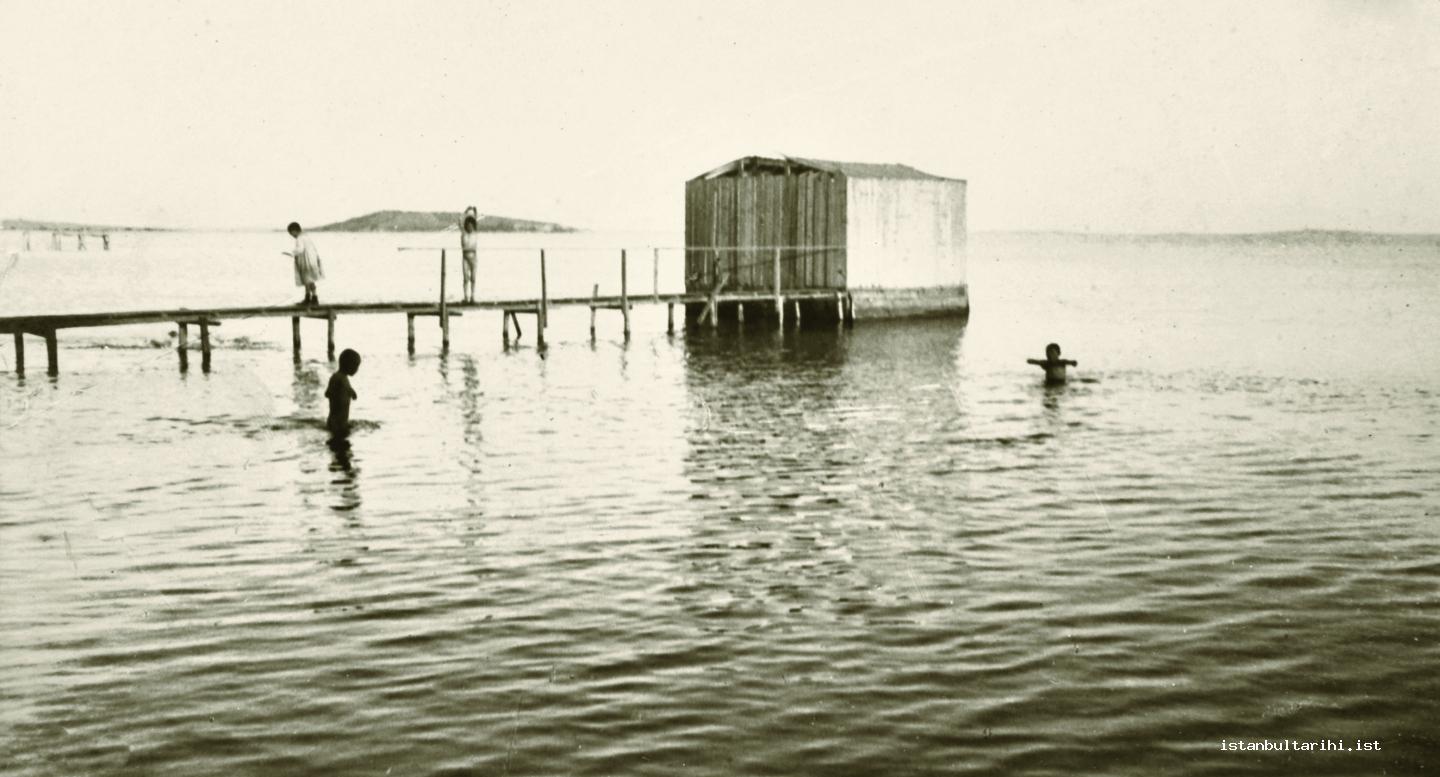
The alafranga-alaturka dilemma which emerged in different areas of social life of Istanbul manifested itself in the rules of etiquette observed on the new forms of transportation. Even though the primary objective was to ensure that everybody could use the vehicles without causing any chaos, the simple rules which were established to realize this objective manifest this dilemma. Ahmed Midhat, who wrote about alfranga adab al-muashara, stated that the most prestigious places on the trains were at the windows, and the first passengers who boarded the train had the right to sit there. The right to open or shut the window also belonged to the people in those seats. Newly-arrived passengers did not have the right to force people already sitting by the windows to change places. Even if someone at a window was asked to give his place to an elderly or ill person, he was not required to do; however, doing so was considered a courtesy. Likewise, nobody could force a person sitting next to a window to open or shut it. Ahmed Midhat summarized the main principle of train travel as “when traveling by train, you do not have to make any sacrifices out of politeness other than the obligatory rules of etiquette.”49 On the other hand, Hasan Bahri expresses that the person sitting next to the window, opening or shutting the window based on a personal preference was not in accordance with good manners. Again, Lütfi Simavi states that the person sitting next to window should first ask the opinion of others in regards to whether the window should be opened or shut. In other words, the alafranga-alaturka dilemma created differences both in practice and in the books of adab al-muashara concerning etiquette to be applied on trains. The principles of alafranga etiquette were usually established around rights and responsibilities, while in the traditional Ottoman lifestyle rules for etiquette were generally based on the principles of moral behavior, sacrifice, politeness and respect. It is for this reason that making sacrifices in matters that were normally within a person’s rights was recommended as a courtesy.
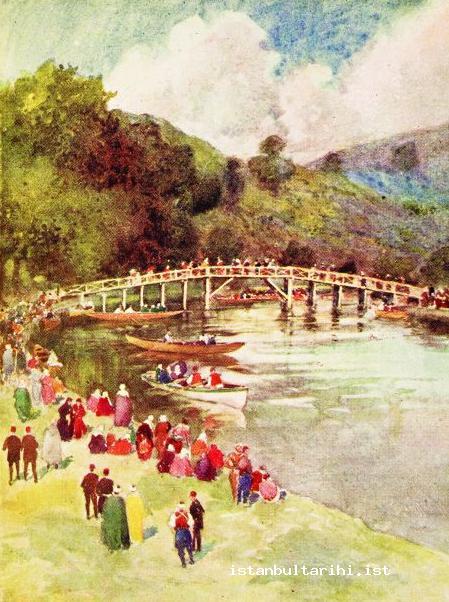
COMMON LIVING AREAS: MESIRE (EXCURSION AREAS), THEATERS AND SEABATHS
When it came to common living areas in the Ottoman State, the first places that come to mind are mesire (excursion areas), coffeehouses, public baths and market places. It is very hard to determine a general context for etiquette under categories such as “public space” or “entertainment”. Even though these places were outside the home, an area that was defined as private space, these places were not totally opposite of private space. The organization and separation of the places outside of the home based on gender prevented these places to be defined totally outside the private realm. For example, while Ottoman coffee houses were important places for male socializing, the bathhouses, functionally places for getting clean, also served as a coffeehouse environment for Ottoman women. For this reason, it seems best to refer to such places as “common living areas.” On the other hand, it would also be difficult to define them as places of entertainment, in the modern sense. Particularly in traditional Ottoman life, the regulation of time was not separated into work and entertainment.
Even though there were some efforts during the 19th-century Ottoman reform process to define work from the rest of activities that were considered to be part of one’s free time, there were no chapters dedicated to “leisure activities” or “places of entertainment” in the books of adab al-muashara of the time. This can be explained by the fact that the books of adab al-muashara were not usually divided into thematic sections; instead related chapter titles were placed near one another. Conversely, subjects related to the rules of etiquette for places and settings such as theaters, picnics, sea bathhouses, horse races, coffeehouses, restaurants and casinos were usually scattered throughout these books and treated separately. As an exception, Resulzade Hüseyin Hüsnü, who translated his work Nezaket ve Usul-i Muâşeret: Kavâid-i Âdâb from French, has a chapter entitled “Recreation Times”; in this chapter he discusses trips, conversation, gymnastics and gambling. Resulzade says that such times are important for resting, mentally relaxing and good health, but he considered gambling as an exception.50
The prominent writers of adab al-muashara books, including Ahmed Midhat, Amasyalı İbrahim Edhem, Hasan Bahri and Lütfi Simavi, discuss sightseeing, theaters, seabaths, horse races, hunting, coffeehouses, restaurants, casinos and summer houses in different chapters of their books. The approaches of the writers to etiquette in such places, however, are striking. These places were usually seen as places of European-style socialization where alafranga rules of etiquette were applicable; however, these writers discouraged the practice of some such etiquette, based on the belief that the European lifestyle had destructive effects on Ottoman family and social life. This is why they wrote their reservations, warnings and even criticisms when they explained the rules of etiquette related to European styles of entertainment in particular. According to Resulzade’s words, “provided that the principle of moderation is applied, there are certain times when entertainment is permissible.”51
The increasing dominance of European etiquette in public places of entertainment caused confusion in certain matters. For example, there were significant differences between the Ottoman tradition and the European rules of etiquette about making payments in such places. In the Ottoman tradition, in places where people eat and drink together, paying the bill was accepted as an act of generosity and kindness. As expressed by Ahmed Midhat, there was no such possibility in European rules of etiquette, not even between siblings. When two brothers went to a café in Europe, they would pay their own bill, even if they each only had one coffee.52 Because this custom was particularly common in England, it was known as the “English style.” Ahmed Midhat found some of the Ottoman ways of treating others and being generous to be exaggerated and liked the European style because it avoided uncertain situations and unnecessary expenditure.
Mesire (Excursion Places)
The mesire, which had an important place in Ottoman social life, were not like modern-day picnic areas. The word mesire is mentioned in the Ottoman sources together with terms like tanazzuh (leisurely walking) and tafarruj (excursion). The word mesire is derived from the Arabic word sayr (walk) and means the place where sayr takes place. In other words, mesire is not the name of an act, but the name of the place where that act happens. A picnic, on the other hand, is a word used for the action itself and refers to getting away from the noisy and dirty city life and going to rural areas to have fresh air, rest and have fun. This is why from a spatial perspective picnic is defined as outside city life, whereas pre-modernization mesire places in Istanbul were physically part of the city composition and within city life.
Eremya Çelebi, a 17th-century traveler, speaks about the beautiful gardens, melon fields and meadows in the districts of Istanbul that are within the city walls. In a similar vein, Evliya Çelebi speaks about the many mesire places in Atmeydanı, Silivrikapı, Topkapı, the Golden Horn region, Vefa, around Fatih Mosque, in the square of Beyazıt Mosque, and around the mosques of Süleymaniye, Şehzade and Hagia Sophia (Ayasofya). Many of the mesire areas in Istanbul were centered around Istanbul’s important mosques. Resting and having fun were not divorced from religious acts or sacred places. For men and women, going to mesire places was part of their visits to tombs or mosques. For example, the district of Eyüp was both a very important mesire place and a pilgrimage location. People from different districts of Istanbul would pass time in the mesire places around the mosque after visiting Eyüp Sultan Mosque and tomb, whereas in modern city life picnicking as an act of leisure has been divorced from religious activities and relocated to places outside of the urban center.
After the mesire culture spread in the 18th century and the Ottoman political elite began to participate in it, we see both that political authorities increased regulations over the mesire places and that more things started to be written about the mesire rules of etiquette. After that period, mesire places became important centers of entertainment both for the general public and the elite classes. After the inclusion of the elite classes in the mesire culture, the places became stages for displaying politeness and elegance, with the number of etiquette rules that needed to be applied increasing. The most basic rules for mesire places can be summarized as follows: to greet the people when you come across, not to occupy people with long conversations, to greet someone who is encountered multiple times only at the first meeting, not to talk to strangers and to listen music when it starts.
In mesire places traditional Ottoman rules of etiquette were dominant. According to Amasyalı İbrahim Edhem, mesire places were spatially separated according to gender and were under the direct control of the Ottoman authorities. Ahmed Cevad says in his book Bizde Kadın (1328/1910) that “In the mesire places, it is rare to come across a woman out walking with a man. It is even banned by the police for a family consisting of men and women to sit together around a table.”53
On the other hand, in his book about European etiquette Ahmed Midhat describes the mesire places in Europe where all participants paid their own expenses, men and women had fun together, and all the women except the older ones were under the care of a man in regards to protection, respect and expenses. In fact, what Ahmed Midhat is speaking about is picnic places, which although important parts of European entertainment culture, differed from Ottoman mesire culture in many aspects.
On the other hand, it is noteworthy to see that Ottoman mesire culture started to change at the beginning of the 20th century, and this change was anticipated by the magazines of the period. In her article, entitled “Family Excursions”, published in Kadınlar Dünyası (1920), Mesudet Bedirhan states that there was a gender-based special separation in the family excursions in the East, whereas men and women shared life more in the West. According to Mesudet Bedirhan, Ottoman women were always ill and because of that, children were deprived of proper care. As a solution, Bedirhan suggested turning the Ottoman mesire places into European picnic areas and letting the entire family go for leisure walks together like in Europe.54
After the 19th century, Ottoman women’s visibility increased by means of various opportunities such as going to mesire places. The books of adab al-muahsara of the period, however, rarely spoke about the rules of etiquette that should be followed by women in mesire places and when they did, they wrote their evaluations on European women rather than on Ottoman women. Even though there were not any adab al-muashara books guiding them, Ottoman women started to adopt European manners in their daily lives, as they read magazines of the period and had new experiences. Paul Dumont, who wrote about the daily life of a man called Said Bey, illustrates how the daily life of a middle-class Ottoman official’s wife was not much different than the European women’s daily life as depicted in European books of etiquette. According to Dumont, Said Bey’s wife had a very busy social calendar. Visiting other women and neighbors, attending celebrations, going to parties, going to Çamlıca, which was one of the prominent mesire places, going to the theater in Şehzadebaşı, and window shopping on the stylish streets of Beyoğlu were the activities that Said Bey’s wife enjoyed the most.55 Of course, Said Bey’s wife was not alone in her habits and activities as many Ottoman women had similar lifestyles.
Theater
The Ottoman palace was introduced to theater thanks to the ambassadors sent to Europe in the 18th century; these ambassadors provided patronage and financial support for the establishment of a theater in Pera. The theaters which were established in the palace and in Pera, however, served only certain classes of society, foreigners and people who knew foreign languages; going to the theater became a sign of status just as it had been in European capitals.56 Naum Duhani tells us that state officials and sultans were highly interested in the theaters, and high ranking politicians in Istanbul, members of the diplomatic circles and the noble classes were also attracted to Naum Theater.57
Theater was considered one of the most important elements of civilized life. Ottoman intellectuals such as Ahmed Midhat and Namık Kemal thought of theater as a means of education that could contribute to the transformation of Ottoman society. They wanted the theater to be followed not only by the elite groups who were considered to noble classes of society, but also the general public, who needed to be educated and civilized. Since the theater was a new art form in the Ottoman Empire, theater etiquette was not known by many Ottomans who had not had the opportunity to be in direct contact with European societies.
On the other hand, theater remained the art of the privileged classes in the last years of the Ottoman Empire and in the early years of the Turkish Republic. The theater for the most part became a place where the elite classes socialized, amused themselves and practiced their European etiquette rather than just a place to watch a play. Amasyalı İbrahim Edhem who was not pleased to see the practice of European rules of etiquette everywhere in Istanbul defined the theater as a place of entertainment just like the mesire places and speaks about theater etiquette without making any reference to European etiquette. This author also speaks about the most basic and general theater etiquette, such as not talking or laughing aloud during the play, not showing too much surprise, not responding to the lines of the play or talking to the actors and not stomping one’s feet on the ground.
On the other hand, in many books of adab al-muashara, the etiquette at the theater, which entered the Ottoman world as a European art, was determined in reference to European rules of etiquette. In the book titled Usul ve Âdâb-ı Muâşeret, which was prepared for the Ottoman military class and was anonymously published by Matbaa-i Askeriye (military press), it is stated that “in Europe people go to theaters and operas as if they are going to an elite gathering.”58 An Ottoman bureaucrat who made observations about London expresses how serious the theater protocols were, saying that “the audience goes to a play wearing their best and most elegant attire, similar to what they wear on special occasions like Sundays. It is customary to wear a white tie, vest and black trousers; anyone who disregards this custom is deemed unacceptable and sent out of the building.”59 In Usul ve Âdâb-ı Muâşeret, the author claims that it was a rule of etiquette for the military classes in Europe to go to the theater wearing their Friday uniforms, but there was not any theater building in Istanbul grand enough to deserve such a dress. As a result, soldiers are advised go to theaters in Istanbul in daily civilian clothes rather than their Friday uniforms.
One of the most important set of rules of etiquette was that concerning tobacco usage in public places. Using tobacco required different rules in different places, such as at the dinner table, in a hall or while travelling. Although it was not advised to smoke in public places like trams, trains or steamboats, it was not banned. On the other hand, it is seen that at that time in Europe, tobacco consumption in public and private places was regulated by certain rules and special places were assigned for smoking. It is also known that smoking was prohibited and special places were arranged for smoking in theaters. It was also against the law to enter these reserved areas with women and there were places reserved for strolling with women.
FOOTNOTES
1 Mustafa Çağrıcı, “Edep”, DİA, X, 413.
2 For the literature on the rules of social etiquette, see: Fatma Tunç Yaşar, The Predicaments of Alla Franca: Visions of Proper Behavior in Late Ottoman Etiquette Literature/Alafranga Halleri: Geç Dönem Osmanlı Âdab-ı Muaşeret Literatüründe Doğru Davranış Biçimleri, Ph.D. dissertation, Bosphorus University, 2012.
3 For Âsafnâme and Ottoman siyasetname literature in general, see: Ahmet Altay, “Klâsik Dönem Osmanlı Siyasetname Geleneğine Genel Bir Bakış”, Turkish Studies, 2011, vol. 6, no. 3, pp. 1795-1809.
4 Lutfî Paşa, Âsafnâme, ed. Ahmet Uğur, Ankara: Kültür ve Turizm Bakanlığı, 1982, p. 13.
5 Altay, “Klâsik Dönem Osmanlı”, p. 1805.
6 Nevin Meriç, Osmanlı’da Gündelik Hayatın Değişimi: Âdâb-ı Muâşeret, Osmanlı Toplumunda Batılılaşma, Istanbul: Kaknüs Yayınları, 2000, p. 15.
7 Kınalızâde Ali Çelebi, Ahlâk-ı Alâî, ed. Mustafa Koç, Istanbul: Klasik, 2007.
8 M. A. Ubicini, Osmanlı’da Modernleşme Sancısı, tr. Cemal Aydın, Istanbul: Timaş Yayınları, 1998, p. 177.
9 For a general evaluation of the books of etiquette written in the classical period, see: Mehmet Öz, “Siyasetname, Ahlak ve Görgü Kitapları, Türk Edebiyatı Tarihi, ed. Talât Sait Halman et al., Istanbul: Kültür ve Turizm Bakanlığı, 2006, vol. 2, p. 359.
10 Âlî Mustafa Efendi, Mevaidü’n-nefâis fî kavâidi’l-mecâlis, ed. Mehmet Şeker, Ankara: Türk Tarih Kurumu, 1997.
11 Hayati Develi, XVIII. Yüzyıl İstanbul Hayatına Dair Risale-i Garibe, Istanbul: Kitabevi Yayınları, 2001.
12 Mehmet Şeker, “Tarihimizde Sosyal Yaşayışa Dair Bazı Kaynaklara Bakış ve Mevâ’idü’n-Nefâis”, DÜİFD, 1983, no. 1, p. 152.
13 Kâtib Çelebi, Mîzânü’l-hak fî ihtiyâri’l-ehak, ed. Süleyman Uludağ and Mustafa Kara, Istanbul: Marifet Yayınları, 2001, pp. 107-108; Kâtib Çelebi, The Balance of Truth, Translated with an introduction and notes by G.L. Lewis, London: George Allen & Unwin, 1957, pp. 101-102.
14 Lütfi Simavi, Teşrîfât ve Âdâb-ı Muâşeret, Istanbul: Matbaa-i İctihad, 1329, p. 11.
15 C. Lamb, Essays of Elia: Letters and Rosamund, a Tale, Paris: Baudry’s European Library, 1835, p. 87.
16 John F. Kasson, Rudeness and Civility: Manners in Nineteenth-Century Urban America, New York : Hill and Wang, 1991, p. 44.
17 Ahmed Midhat, Avrupa Âdâb-ı Muâşereti Yahud Alafranga, Istanbul: İkdam Matbaası, 1312; Lütfi Simavi, Teşrîfât; Hasan Bahri, Centilmen, Istanbul: 1328.
18 B. Davetian, Civility: A Cultural History, Toronto : University of Toronto Press, 2009, p. 9.
19 İbrahim Edhem, Rehber-i Müsâfirîn ve Âdâb-ı Muâşeret, Istanbul: Kasbar Matbaası, 1316.
20 İbrahim Edhem, Rehber-i Müsâfirîn, p. 34.
21 Ahmet Midhat, Avrupa Âdâb-ı Muâşereti, p. 50.
22 İbrahim Edhem, Rehber-i Müsâfirîn, p. 41.
23 Mehmed Emin, Âdâb-ı Muâşeret Nasıl Hasıl Olur, Aydın: Aydın Vilayet Matbaası, 1321.
24 İbrahim Edhem, Rehber-i Müsâfirîn,, p. 52.
25 Ahmed Hamdi Tanpınar, Beş Şehir, İstanbul 2005, s. 122.
26 İbrahim Hilmi, “İfade-i Naşir: Yaşamayı Bilmek,” in Comtesse de Magallon, Rehber-i Muâşeret: Avrupa Âdâb-ı Muâşereti, translated by Ahmed Cevad, Istanbul: Artin Asaduryan ve Mahdumları Matbaası, 1328, p. 4.
27 Ahmet Rasim, Muharrir Bu Ya, ed. Hikmet Dizdaroğlu, Ankara: Milli Eğitim Bakanlığı, 1969, p. 98.
28 Ahmet Ersoy, “A Sartorial Tribute to Late Tanzimat Ottomanism: The Elbise-i Osmaniyye Album,” Muqarnas, 2003, no. 20, p. 196.
29 Abdullah Cevdet, Mükemmel ve Resimli Âdâb-ı Muâşeret Rehberi, Istanbul: Kitap ve Kağıt Pazarı, 1927, p. 104.
30 Ekrem Işın, “Abdullah Cevdet’in Cumhuriyet Âdâb-ı Muâşereti”, TT, 1987, no. 48, p. 334.
31 Hasan Bahri, Centilmen, p. 9.
32 Yakup Kadri Karaosmanoğlu, Kiralık Konak, Istanbul: İletişim Yayınları, 2001, pp. 10-11.
33 Hilmi Uran, Hatıralarım, Ankara: Ayyıldız Matbaası, 1959, p. 13.
34 Lütfi Simavi, Teşrîfât, p. 15.
35 Vasıf Necdet, Muâşeret Yolları: Şapka Kıyafet ve Medeni Âdâbdan Bahseder, Bursa: Kardeş Matbaası, 1926, p. 6.
36 BOA, HAT, no. 195/9735 (29/Z/1204).
37 BOA, C.ML, no. 665/27204 (29/Z/1300).
38 Hayal, no. 157 (June 7, 1291/June 19, 1875).
39 Hasan Bahri, Centilmen, p. 16.
40 Lütfi Simavi, Teşrîfât, p. 42.
41 Arife Hanım, Şükûfezar, no. 4 (1303/1885), p. 60.
42 Lütfi Simavi, Teşrîfât, p. 16.
43 Abdullah Cevdet, Mükemmel ve Resimli, p. 49.
44 Abdülaziz Bey, Osmanlı Adet, Merasim ve Tabirleri, ed. Kazım Arısan and Duygu Arısan Günay, Istanbul: Tarih Vakfı Yurt Yayınları, 1995, p. 232.
45 Abdülaziz Bey, Osmanlı Adet, Merasim ve Tabirleri, p. 239.
46 Zeynep Çelik, Displaying the Orient: Architecture of Islam at Nineteenth-Century World’s Fairs, Berkeley: University of California, 1992, p. 86.
47 Ahmed Midhat, Avrupa Âdâb-ı Muâşereti, p. 186.
48 Malik Aksel, İstanbul’un Ortası, Ankara: Kültür Bakanlığı, 1977, p. 173.
49 Ahmed Midhat, Avrupa Âdâb-ı Muâşereti, pp. 17-18.
50 Resulzâde Hüseyin Hüsnü, Nezaket ve Usul-i Muâşeret: Kavâid-i Âdâb, Istanbul: 1306, p. 13.
51 Resulzâde, Nezaket ve Usul-i Muâşeret, p. 13.
52 Ahmed Midhat, Avrupa Âdâb-ı Muâşereti, p. 543.
53 Ahmed Cevad, Bizde Kadın, Istanbul: Kader Matbaası, 1328, p. 25.
54 Mesudet Bedirhan, “Aile Tenezzühleri”, Kadınlar Dünyası, 100/6 (24 August 1339/4 Şevval 1339), pp. 3-5.
55 Paul Dumont, “The Everyday Life of an Istanbul Townsman at the Beginning of the Twentieth Century”, in The Modern Middle East, ed. Albert Hourani, Philip S. Khoury and Mary C. Wilson, Berkeley: I. B. Tauris, 1993, p. 282.
56 Dilek Özhan Koçak, Osmanlı Tiyatrosu: 19. Yüzyıl İstanbul’unda Kültürel Dönüşümün Sahnesi, Istanbul: Parşömen Yayıncılık, 2011, pp. 199-200.
57 Said Naum Duhani, Eski İnsanlar Eski Evler: 19. Yüzyıl Sonunda Beyoğlu’nun Sosyal Topoğrafyası, translated by Ahmet Parman, Istanbul: Türkiye Turing ve Otomobil Kurumu, 1984, p. 62.
58 Usul ve Âdâb-ı Muâşeret, Istanbul Matbaa-i Askeriye, 1327, p. 44.
59 Fikret Turan, Seyahatname-i Londra: Tanzimat Bürokratının Modern Sanayi Toplumuna Bakışı, Istanbul: Tarih Vakfı Yurt Yayınları, 2009, p. 53.
